 W
WAeclanum was an ancient town of Samnium, southern Italy, about 25 km east-southeast of Beneventum, on the Via Appia. It lies in Passo di Mirabella, near the modern Mirabella Eclano.
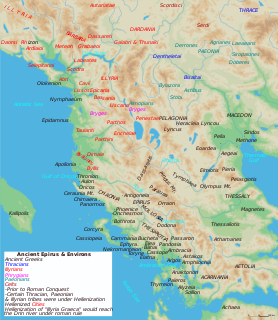 W
WAntigonea, also transliterated as Antigonia and Antigoneia, was an ancient Greek city in Chaonia, Epirus, and the chief inland city of the ancient Chaonians. It was founded in the 3rd century BC by Pyrrhus of Epirus, who named it after one of his wives, Antigone, daughter of Berenice I and step-daughter of Ptolemy I of Egypt.
 W
WThe Beijing Ming City Wall Ruins Park is a park in Beijing with the longest and best preserved section of the city's Ming Dynasty city wall. The park is located 3 km (1.9 mi) from the city center and extends east from Chongwenmen to Dongbianmen and then north to near to Beijing Railway Station East Street. The park features a 1.5 km (0.93 mi) section of the Ming city wall and the Southeast Corner Tower, which are over 550 years old and surrounded by green park space to the south and east. The park covers an area of 15.5 ha, including 3.3 ha of fortifications and 12.2 ha of green space. Access to the corner tower and the ramparts atop the wall is available during business hours and require paying admission.
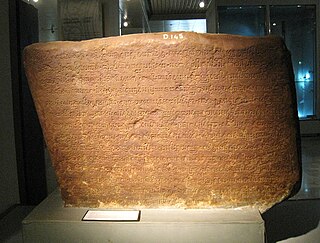 W
WBukit Seguntang or Bukit Siguntang is a 29–30 metres high small hill located at the northern bank of Musi River and within the vicinity of Palembang, capital city of South Sumatra, Indonesia. It is located around 3 kilometres north from Musi River northern bank and around four kilometres southwest from Palembang city center. The place is considered sacred by the locals and home of many archeological relics believed to be related to Srivijaya Empire, once a dominating political power around Malacca Strait. Today the hill gain status as an archaeological park.
 W
WCarnuntum was a Roman legionary fortress and headquarters of the Pannonian fleet from 50 AD. After the 1st century, it was capital of the Pannonia Superior province. It also became a large city of 50,000 inhabitants.
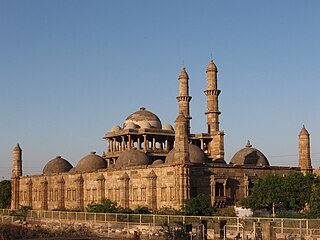 W
WChampaner-Pavagadh Archaeological Park, a UNESCO World Heritage Site, is located in Panchmahal district in Gujarat, India. It is located around the historical city of Champaner, a city which was founded by Vanraj Chavda, the most prominent king of the Chavda Dynasty, in the 8th century. He named it after the name of his friend and general Champa, also known later as Champaraj. The heritage site is studded with forts with bastions starting from the hills of Pavagadh, and extending into the city of Champaner. The park's landscape includes archaeological, historic and living cultural heritage monuments such as chalcolithic sites, a hill fortress of an early Hindu capital, and remains of the 16th-century capital of the state of Gujarat. There are palaces, entrance gates and arches, mosques, tombs and temples, residential complexes, agricultural structures and water installations such as stepwells and tanks, dating from the 8th to the 14th centuries. The Kalika Mata Temple, located on top of the 800 metres (2,600 ft) high Pavagadh Hill, is an important Hindu shrine in the region, attracting large numbers of pilgrims throughout the year.
 W
WThe Prehistoric Rock-Art Site of the Côa Valley is an open-air Paleolithic archaeological site located in northeastern Portugal, near the border with Spain.
 W
WCrystal River State Archaeological Site is a 61-acre (250,000 m2) Florida State Park located on the Crystal River and within the Crystal River Preserve State Park. The park is located two miles (3 km) northwest of the city of Crystal River, on Museum Point off U.S. 19/98.
 W
WThe European Archaeological Park at Bliesbruck-Reinheim, in the German municipality of Gersheim (Saarland) and the French municipality of Bliesbruck, is a cross-border project which combines excavations and reconstructions of Celtic and Roman finds with exhibition and educational facilities. It was created in 1989 as a result of the archaeological work being done on both sides of the Franco-German border. Together with archaeological evidence from the Mesolithic Period, the Bronze Age, and the period of the Germanic migrations, the Celtic and Roman finds from the Iron Age bear witness to a history of continuous settlement in the Blies Valley that spans a period of 10,000 years.
 W
WFontenelle Abbey was a Cistercian nunnery in Maing, Nord, France, extant from 1212 to 1793.
 W
WThe Fountain of Youth Archaeological Park is a privately owned 15-acre (61,000 m2) park in St. Augustine, Florida, located along Hospital Creek, part of the Intracoastal Waterway. It has been touted as the likely 1513 Florida landing site of Spanish explorer Ponce de Leon, although no evidence has been found to substantiate this claim. Recent research by amateur historian Douglas Peck has placed another possible landing site in the vicinity of Melbourne Beach in Brevard County.
 W
WThe Gavà Museum and the Gavà Mines Archaeological Park, founded in 1978, comprises two facilities: the Gavà Museum and the Gavà Mines Archaeological Park. It is part of the Barcelona Provincial Council Local Museum Network.
 W
WGoshono ruins is a middle Jōmon period archaeological site in the town of Ichinohe, Iwate Prefecture, in the Tōhoku region of northern Japan. Discovered during the construction of an industrial park in 1989, the area was designated a National Historic Site in 1993 by the Japanese government.
 W
WHerculaneum was an ancient town, located in the modern-day comune of Ercolano, Campania, Italy. Herculaneum was buried under volcanic ash and pumice in the eruption of Mount Vesuvius in AD 79.
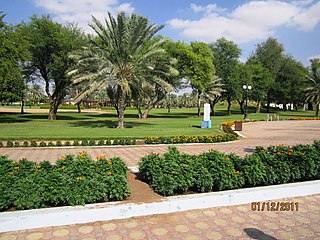 W
WHili Archaeological Park is the location of a Bronze Age site in Al Ain, Emirate of Abu Dhabi, the United Arab Emirates.
 W
WThe Imperial fora are a series of monumental fora, constructed in Rome over a period of one and a half centuries, between 46 BC and 113 AD. The fora were the center of the Roman Republic and of the Roman Empire.
 W
WKabayama ruins is an archaeological site consisting of a Jōmon period settlement and possible ceremonial center located in the Inase neighborhood of Kitakami, Iwate, in the Tōhoku region of northern Japan. It has been designated as a National Historic Site since 1977.
 W
WThe Kakinoshima Site is an archaeological site consisting of a series of large shell middens and the remains of an adjacent settlement from the Jōmon period. The site is in what is now part of the city of Hakodate in Oshima Subprefecture on the island of Hokkaido in northern Japan. It has been protected by the central government as a Historic Site since 7 February 2011. The site covers an area of 92.749 square kilometers (35.811 sq mi).
 W
WLake Jackson Mounds Archaeological State Park (8LE1) is one of the most important archaeological sites in Florida, the capital of chiefdom and ceremonial center of the Fort Walton Culture inhabited from 1050–1500. The complex originally included seven earthwork mounds, a public plaza and numerous individual village residences.
 W
WMehrauli Archaeological Park is an archaeological area spread over 200 acre in Mehrauli, Delhi, adjacent to Qutub Minar World Heritage Site and the Qutb complex. It consists of over 100 historically significant monuments. It is the only area in Delhi known for 1,000 years of continuous occupation, and includes the ruins of Lal Kot built by Tomar Rajputs in 1060 CE, making it the oldest extant fort of Delhi, and architectural relics of subsequent period, rule of Khalji dynasty, Tughlaq dynasty, Lodhi dynasty of Delhi Sultanate, Mughal Empire, and the British Raj.
 W
WMorgantina is an archaeological site in east central Sicily, southern Italy. It is sixty kilometres from the coast of the Ionian Sea, in the province of Enna. The closest modern town is Aidone, two kilometres southwest of the site. The site consists of a two-kilometre long ridge running southwest-northeast, known as Serra Orlando, and a neighboring hill at the northeast called Cittadella. Morgantina was inhabited in several periods. The earliest major settlement was made at Cittadella and lasted from about 1000/900 to about 450 BCE. The other major settlement was located on Serra Orlando, and existed from about 450 BCE to about 50 CE. Morgantina has been the subject of archaeological investigation since the early 20th century.
 W
WMotya was an ancient and powerful city on San Pantaleo Island off the west coast of Sicily, in the Stagnone Lagoon between Drepanum and Lilybaeum. It is within the present-day commune of Marsala, Italy.
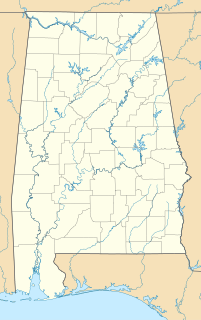 W
WThe Moundville Archaeological Museum is an archaeological park and museum in Moundville, Alabama The museum houses artifacts and displays exhibits on over 60 years of archaeological excavations and investigations in the Moundville Archaeological Park.
 W
WMoundville Archaeological Site, also known as the Moundville Archaeological Park, is a Mississippian culture archaeological site on the Black Warrior River in Hale County, near the modern city of Tuscaloosa, Alabama. Extensive archaeological investigation has shown that the site was the political and ceremonial center of a regionally organized Mississippian culture chiefdom polity between the 11th and 16th centuries. The archaeological park portion of the site is administered by the University of Alabama Museums and encompasses 185 acres (75 ha), consisting of 29 platform mounds around a rectangular plaza.
 W
WThe Neanderthal Museum is a museum in Mettmann, Germany. Located at the site of the first Neanderthal man discovery in the Neandertal, it features an exhibit centered on human evolution. The museum was constructed in 1996 to a design by the architects Zamp Kelp, Julius Krauss and Arno Brandlhuber and draws about 170,000 visitors per year. The museum also includes an archaeological park on the original discovery site, a Stone Age workshop, as well as an art trail named "human traces". All signs in the museum as well as the audio guide offered by the museum are available in German and English.
 W
WThe Necropolis of Pantalica is a collection of cemeteries with rock-cut chamber tombs in southeast Sicily, Italy. Dating from the 13th to the 7th centuries BC., there was thought to be over 5,000 tombs, although the most recent estimate suggests a figure of just under 4,000. They extend around the flanks of a large promontory located at the junction of the Anapo river with its tributary, the Calcinara, about 23 km (14 mi) northwest of Syracuse. Together with the city of Syracuse, Pantalica was listed as a UNESCO World Heritage Site in 2005.
 W
WThe Ōfune Site is an archaeological site consisting of a series of large shell middens and the remains of an adjacent settlement from the Jōmon period. The site is in what is now part of the city of Hakodate in Oshima Subprefecture on the island of Hokkaido in northern Japan. It has been protected by the central government as a Historic Site since 13 August 2001. The site covers an area of 71.832 square kilometers.
 W
WThe Old Stone Fort is a prehistoric Native American structure located in Coffee County, Tennessee, in the Southeastern United States. The structure was most likely built between 80 and 550 AD during the Middle Woodland period. It is the most complex hilltop enclosure found in the South and was likely used for ceremonial purposes rather than defense.
 W
WOstia Antica is a large archaeological site, close to the modern town of Ostia, that is the location of the harbour city of ancient Rome, 15 miles southwest of Rome. "Ostia" is a derivation of "os", the Latin word for "mouth". At the mouth of the River Tiber, Ostia was Rome's seaport, but due to silting the site now lies 3 kilometres from the sea. The site is noted for the excellent preservation of its ancient buildings, magnificent frescoes and impressive mosaics.
 W
WPaphos Archaeological Park contains the major part of the important ancient Greek and Roman city and is located in Paphos, southwest Cyprus. The park, still under excavation, is within the Nea Pafos section of the coastal city.
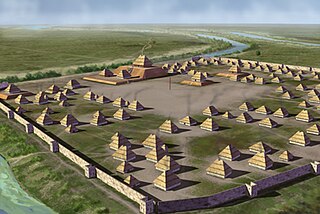 W
WParkin Archeological State Park, also known as Parkin Indian Mound, is an archeological site and state park in Parkin, Cross County, Arkansas. Around 1350–1650 CE an aboriginal palisaded village existed at the site, at the confluence of the St. Francis and Tyronza rivers. Artifacts from this site are on display at the site museum. The Parkin Site is the type site for the Parkin phase, an expression of the Mississippian culture from the Late Mississippian period. Many archeologists believe it to be part of the province of Casqui, documented as visited by Spanish explorer Hernando de Soto in 1542. Archeological artifacts from the village of the Parkin people are dated to 1400–1650 CE.
 W
WPiedras del Tunjo is an important archaeological park established on a natural rock shelter 40 kilometres (25 mi) west of Bogotá in the municipality of Facatativá.
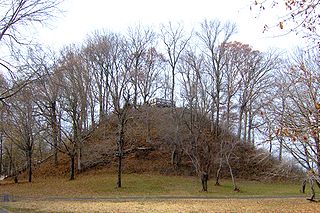 W
WThe Pinson Mounds comprise a prehistoric Native American complex located in Madison County, Tennessee, in the region that is known as the Eastern Woodlands. The complex, which includes 17 mounds, an earthen geometric enclosure, and numerous habitation areas, was most likely built during the Middle Woodland period. The complex is the largest group of Middle Woodland mounds in the United States. Sauls' Mound, at 72 feet (22 m), is the second-highest surviving mound in the United States.
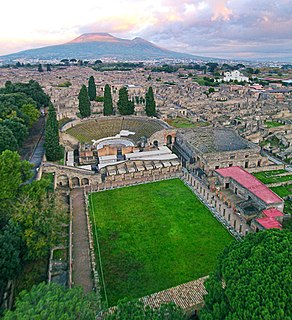 W
WPompeii was an ancient city located in what is now the comune of Pompei near Naples in the Campania region of Italy. Pompeii, along with Herculaneum and many villas in the surrounding area, was buried under 4 to 6 m of volcanic ash and pumice in the eruption of Mount Vesuvius in AD 79.
 W
WPueblo Grande Ruin and Irrigation Sites are pre-Columbian archaeological sites and ruins, located in Phoenix, Arizona. They include a prehistoric platform mound and irrigation canals. The City of Phoenix manages these resources as the Pueblo Grande Museum Archaeological Park.
 W
WEl Puente, or the Parque Arqueológico El Puente , is a Maya archaeological site in the department of Copán in Honduras. Once an independent Maya city, the city of El Puente became a tributary to the nearby city of Copán between the 6th and 9th centuries AD. The site contains more than 200 structures that include tombs, religious structures, and living quarters, but only a few have been excavated, including a large Maya step pyramid. Siga buscando
 W
WThe Puig de sa Morisca Archaeological Park is located in Santa Ponsa in the municipality of Calvià on the island of Majorca, part of the Spanish autonomous community of the Balearic Islands. Puig de sa Morisca is a hill, preserved in 2002 as an archaeological park. The park is 35 hectares in size and open to the public. The park contains more than 15 sites and nine architectural elements that are ethnologically interesting. One of these sites, the Son Ferrer tomb, was excavated from 2000 through 2009, a joint project of the University of the Balearic Islands, University of Barcelona, and University of Valencia. In addition, it includes Balearic flora found within a 10 km (6.2 mi) radius.
 W
WThe Roman Forum, also known by its Latin name Forum Romanum, is a rectangular forum (plaza) surrounded by the ruins of several important ancient government buildings at the center of the city of Rome. Citizens of the ancient city referred to this space, originally a marketplace, as the Forum Magnum, or simply the Forum.
 W
WSan Agustín is a town and municipality in the southern Colombian Department of Huila. The town is located 227 km away from the capital of the Department, Neiva. Population is around 34,000. The village was founded in 1752 by Alejo Astudillo but attacks by indigenous people destroyed it. The present village was founded in 1790 by Lucas de Herazo and Mendigaña.
 W
WSan Pedro Underwater Archaeological Preserve State Park is a Florida State Park located in 18 feet (5.5 m) of water, approximately 1.25 nautical miles (2.32 km) south of Indian Key. It became the second Florida Underwater Archaeological Preserve when it opened to the public in 1989. The heart of the park is the San Pedro, a submerged shipwreck from a 1733 Spanish flotilla, around which visitors can dive and snorkel. The San Pedro, a 287-ton Dutch-built vessel, and 21 other Spanish ships under the command of Rodrigo de Torres left Havana, Cuba, on Friday, July 13, 1733, bound for Spain. The San Pedro carried a cargo of 16,000 silver Mexican pesos and crates of Chinese porcelain. A hurricane struck the fleet, while entering the Straits of Florida, and sank or swamped most of the fleet. The wrecksite includes an "eighteenth century anchor, replica cannons, ballast stones encrusted with coral, a dedication plaque, and a mooring buoy system." The wreck was added to the U.S. National Register of Historic Places on May 31, 2001.
 W
WThe Sannai-Maruyama Site is an archaeological site and museum located in the Maruyama and Yasuta neighborhoods to the southwest of central Aomori in Aomori Prefecture in northern Japan, containing the ruins of a very large Jōmon period settlement. The ruins of a 40-hectare settlement were discovered in 1992, when Aomori Prefecture started surveying the area for a planned baseball stadium. Archaeologists have used this site to further their understanding of the transition to sedentism and the life of the Jōmon people. Excavation has led to the discovery of storage pits, above ground storage and long houses. These findings demonstrate a change in the structure of the community, architecture, and organizational behaviors of these people. Because of the extensive information and importance, this site was designated as a Special National Historical Site of Japan in 2000., and a UNESCO World Heritage Site as part of the Jōmon Prehistoric Sites in Northern Japan collection in 2021. Today the public can visit the site, its various reconstructions of Jōmon structures, and a museum that displays and houses artifacts collected on the site, which have collectively been designated an Important Cultural Property
 W
WSegesta was one of the major cities of the Elymians, one of the three indigenous peoples of Sicily. The other major cities of the Elymians were Eryx and Entella. It is located in the northwestern part of Sicily in Italy, near the modern commune of Calatafimi-Segesta in the province of Trapani. The hellenization of Segesta happened very early and had a profound effect on its people.
 W
WSelinunte was an ancient Greek city on the south-western coast of Sicily in Italy. It was situated between the valleys of the Cottone and Modione rivers. It now lies in the comune Castelvetrano, between the frazioni of Triscina di Selinunte in the west and Marinella di Selinunte in the east. The archaeological site contains five temples centered on an acropolis. Of the five temples, only the Temple of Hera, also known as "Temple E", has been re-erected. At its peak before 409 BC the city may have contained up to 30,000 people, excluding slaves.
 W
WShiwa Castle was an early Heian period jōsaku-style Japanese castle located in what is now part of the city of Morioka, Iwate Prefecture in the Tōhoku region of far northern Honshu, Japan. The site was proclaimed a National Historic Site of Japan in 1979.
 W
WTaga Castle was a jōsaku-style Japanese castle built in the late Nara period in what is now part of the city of Tagajō in Miyagi prefecture in the Tōhoku region of far northern Honshu, Japan. Bashō tells of his visit to the site in Oku no Hosomichi. The ruins of Taga-jō and its former temple have been designated a Special Historic Site (特別史跡) since 1922.
 W
WSrivijaya archaeological park, formerly known as Karanganyar archaeological site, is the ancient remnants of a garden and habitation area near the northern bank of Musi river within Palembang vicinity, South Sumatra, Indonesia. Remnants of ancient man-made canals, moats, ponds and artificial islands discovered in this area suggests the site was related with a 9th-century settlement related to the Srivijaya empire. Several artifacts, such as Buddhist statues, beads, pottery and Chinese ceramics were found in this area, confirming the area was once a dense human habitation.
 W
WSuasa was an ancient Roman town in what is now the comune of Castelleone di Suasa, Marche, Italy. It is located in the Pian Volpello locality, in the valley of the Cesano River.
 W
WSunWatch Indian Village / Archaeological Park, previously known as the Incinerator Site, and designated by the Smithsonian trinomial 33-MY-57, is a reconstructed Fort Ancient Native American village next to the Great Miami River on West River Road in Dayton, Ohio. The dwellings and site plan of the 3-acre (1.2 ha) site are based on lengthy archeological excavations sponsored by the Dayton Society of Natural History, which owns and operates the site as an open-air museum. Because of its archaeological value, the site was listed in 1974 on the National Register of Historic Places. Since that time, as the many years of archaeological research at the site have led to important findings about the Fort Ancient culture, SunWatch Indian Village was designated in 1990 as a National Historic Landmark.
 W
WThe Archaeological Park of Urbs Salvia is situated in the comune of Urbisaglia, in the Marches, Italy. It is the largest archaeological park in the region.
 W
WThe Valle dei Templi, or Valley of the Temples, is an archaeological site in Agrigento, Sicily. It is one of the most outstanding examples of Greater Greece art and architecture, and is one of the main attractions of Sicily as listed in 1997. Much of the excavation and restoration of the temples was due to the efforts of archaeologist Domenico Antonio Lo Faso Pietrasanta (1783–1863), who was the Duke of Serradifalco from 1809 through 1812. During the 20th century, the archeological excavation was mainly funded by Sir Alexander Hardcastle. He permitted archaeological excavations within the archaeological park including the straightening of the eight columns on the south side of the Temple of Heracles. For his contributions to archaeology he was made an honorary citizen of the city of Agrigento and was granted the rank of Commander of the Order of the Crown of Italy.
 W
WThe Yuan Dadu City Wall Ruins Park, also known as the Tucheng or Earth Wall Park, is an urban park and historic site in Beijing. The park was created in 1988 to preserve the ruins of the northern city wall of Khanbaliq or Dadu, capital of the Mongol-led Yuan dynasty. The city wall was constructed in 1267 and finished in 1276. It was abandoned in the Ming dynasty when Beijing was rebuilt and slightly shifted to the south. The northern segment of the city wall is preserved, and a narrow and long park was created around the ruin of the city wall in Haidian District and Chaoyang District. It runs in between and parallel to the northern sections of the 3rd and 4th Ring Roads. The park underwent restoration in 2003.